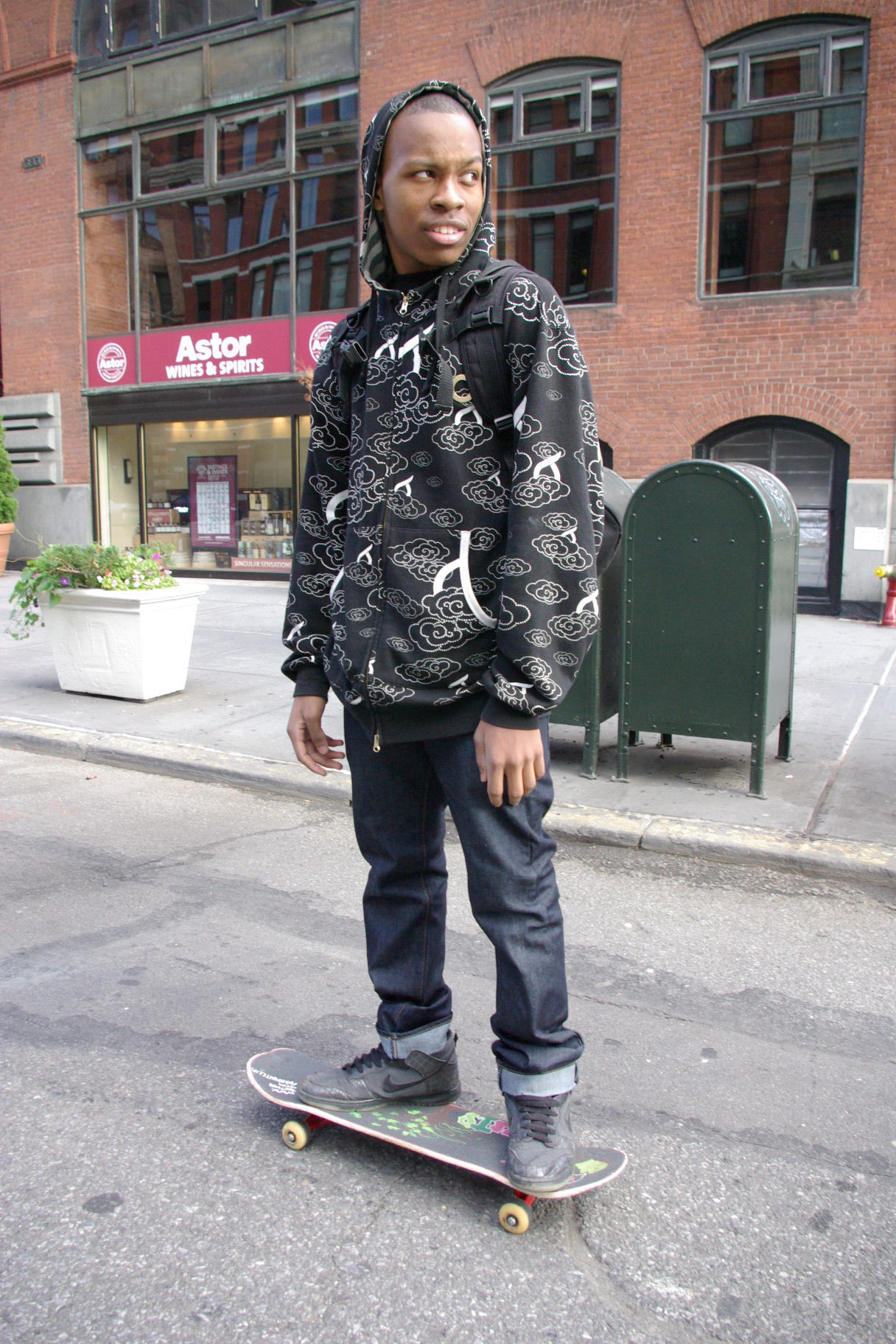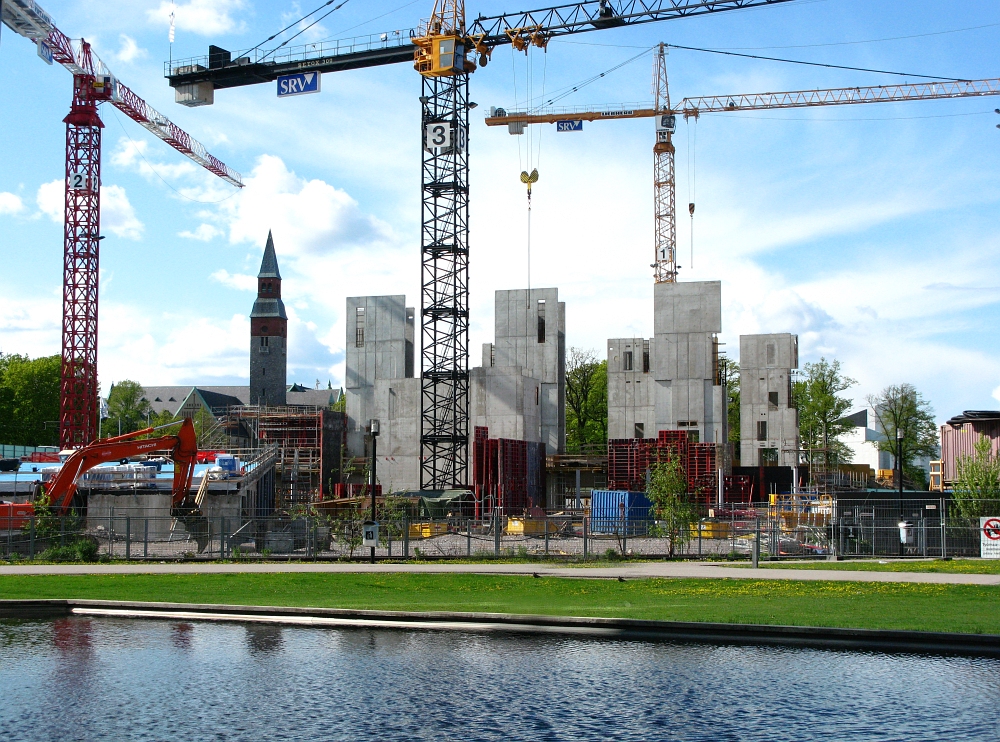|
Baana
Baana is a former railway, which has been transformed into a pedestrian and cycling path as an urban renewal project in Helsinki, replacing the Helsinki harbour railway. Its length is about 1.3 kilometers (0.81 mi), starting from Kiasma. It is used annually by approximately 700 000 cyclists. History There were three plans to convert the railway cutting left behind by the disused Helsinki harbour rail to a new use. Of the three plans, the bicycle and pedestrian alternative prevailed in the end. The modification to bike and pedestrian use took several years. The name ''Baana'' (Finnish slang word for (rail)way coming from Swedish ''bana'' and German ''Bahn'') for the new route was obtained through a naming competition. Baana was opened to the public on Helsinki Day, 12 June 2012. Baana begins between Helsinki Music Centre and Kiasma. It runs to a new separated-grade vehicle/bicycle junction called Länsilinkki (Western Link) near former level crossing of Hietalahdenranta st ... [...More Info...] [...Related Items...] OR: [Wikipedia] [Google] [Baidu] |
Helsinki Harbour Rail
The Helsinki harbour rail line ( fi, Helsingin satamarata) was a side rail track in Helsinki, Finland, built in the 1890s, and dismantled in 2009. Originally it led from the Helsinki Central railway station, via the city's coastline, to Katajanokka. Its original length was , but in its final stage, its length was only about . In the final phase the track had two level crossings and a railyard in the Länsisatama (West Harbour). Near the start of the track were the former VR warehouses. It was used only by trains going to the harbour and Hietalahti shipyard, but special request trains have also travelled the track. Early history and expansion to maximum extent The construction of the harbour rail began in 1891, although the first plans for the track had been made in 1870. The first train to Eteläsatama ran in December 1893 and the line was inaugurated in the next spring, on 8 April 1894, when it reached the old sales hall. The extension of the rails to Katajanokka was comple ... [...More Info...] [...Related Items...] OR: [Wikipedia] [Google] [Baidu] |
Cycling Infrastructure
Cycling infrastructure is all infrastructure cyclists are allowed to use. Bikeways include bike paths, bike lanes, cycle tracks, rail trails and, where permitted, sidewalks. Roads used by Motor vehicle, motorists are also cycling infrastructure, except where cyclists are barred such as many Controlled-access highway, freeways/motorways. It includes amenities such as Bicycle stand, bike racks for parking, shelters, service centers and specialized traffic signs and signals. The more cycling infrastructure, the more modal share, people get about by bicycle. Good road design, road maintenance and traffic management can make Safety of cycling infrastructure, cycling safer and Cyclability, more useful. Settlements with a dense network of grid plan, interconnected streets tend to be places for utility cycling, getting around by bike. Their cycling networks can give people direct, fast, easy and convenient routes. History The history of cycling infrastructure starts from shortly a ... [...More Info...] [...Related Items...] OR: [Wikipedia] [Google] [Baidu] |
Rail Trail
A rail trail is a shared-use path on railway right of way. Rail trails are typically constructed after a railway has been abandoned and the track has been removed, but may also share the right of way with active railways, light rail, or streetcars ( rails with trails), or with disused track. As shared-use paths, rail trails are primarily for non-motorized traffic including pedestrians, bicycles, horseback riders, skaters, and cross-country skiers, although snowmobiles and ATVs may be allowed. The characteristics of abandoned railways—gentle grades, well-engineered rights of way and structures (bridges and tunnels), and passage through historical areas—lend themselves to rail trails and account for their popularity. Many rail trails are long-distance trails, while some shorter rail trails are known as greenways or linear parks. Rail trails around the world Americas Bermuda The Bermuda Railway ceased to operate as such when the only carrier to exist in Bermuda folded in 19 ... [...More Info...] [...Related Items...] OR: [Wikipedia] [Google] [Baidu] |
Table Tennis
Table tennis, also known as ping-pong and whiff-whaff, is a sport in which two or four players hit a lightweight ball, also known as the ping-pong ball, back and forth across a table using small solid rackets. It takes place on a hard table divided by a net. Except for the initial serve, the rules are generally as follows: Players must allow a ball played toward them to bounce once on their side of the table and must return it so that it bounces on the opposite side. A point is scored when a player fails to return the ball within the rules. Play is fast and demands quick reactions. Spinning the ball alters its trajectory and limits an opponent's options, giving the hitter a great advantage. Table tennis is governed by the worldwide organization International Table Tennis Federation (ITTF), founded in 1926. ITTF currently includes 226 member associations. The official rules are specified in the ITTF handbook. Table tennis has been an Olympic sport since 1988, with several even ... [...More Info...] [...Related Items...] OR: [Wikipedia] [Google] [Baidu] |
Kamppi
Kamppi () is a neighbourhood in the centre of Helsinki, the capital of Finland. The name originally referred to a small area known as the "Kamppi field" (see below), but according to the current official designation, "Kamppi" encompasses a much larger area with a population of 10,000 in 2004. The heart of Kamppi is a part of the Central Business District. However, in stark contrast to the other districts of central Helsinki, development in Kamppi was sporadic and the very centre of Kamppi remained entirely undeveloped until 2002. The name "Kamppi" is derived from the Swedish word for battle, ''kamp''. Under Russian rule in the 19th century, Kamppi was mainly used as a military area by Russian forces, with barracks and training fields, which the name refers to. This so-called "Kamppi field" in the centre of Kamppi was also the location of a market run by Jewish merchants from the late 19th century until 1929 when it was shut down. A new pedestrian plaza on the same site, complet ... [...More Info...] [...Related Items...] OR: [Wikipedia] [Google] [Baidu] |
Kluuvi
Kluuvi (; sv, Gloet) is the commercial centre of Helsinki, Finland, and a neighbourhood in the Vironniemi district of Helsinki. The Helsinki Central railway station, Hotel Kämp and Hotel Arthur, the Helsinki main post office, the Stockmann and Sokos department stores, the Kluuvi shopping centre and the main offices of Finnish banks are located in Kluuvi. Kluuvi includes the central campus of the University of Helsinki, the Ateneum art museum, and the movie theatres Maxim, Kinopalatsi and Bristol. The northeastern part of Kluuvi, which includes the Kaisaniemi park, is commonly called Kaisaniemi, but it is not the official name of any neighbourhood in Helsinki. The neighbourhood is home to 23,000 jobs and several hundred inhabitants. The official name of the neighbourhood is very seldom used in everyday speech, Helsinkians usually refer to the area as "the centre" (''keskusta'') or "the core centre" (''ydinkeskusta''). History The Finnish word ''kluuvi'' and the Swedish word ... [...More Info...] [...Related Items...] OR: [Wikipedia] [Google] [Baidu] |
European Prize For Urban Public Space
The European Prize for Urban Public Space is a biennial award established in 2000 to recognise public space projects. It is organised by the Centre de Cultura Contemporània de Barcelona together with six other European institutions: The Architecture Foundation, Cité de l'Architecture et du Patrimoine, Architekturzentrum Wien, Netherlands Architecture Institute, German Architecture Museum The German Architecture Museum (german: Deutsches Architekturmuseum, links=no) (DAM) is located on the Museumsufer in Frankfurt, Germany. Housed in an 18th-century building, the interior has been re-designed by Oswald Mathias Ungers in 1984 as ... and the Museum of Finnish Architecture.A10"European Prize for Urban Public Space", 1 May 2010 The number of nominations for the prize increased from 81 projects in 2000 to 347 projects in 2012, while the number of countries participating increased form 14 in the first year to 36 in 2012.Architecture Today"Ljubljana/ Barcelona: Winners of the 2012 ... [...More Info...] [...Related Items...] OR: [Wikipedia] [Google] [Baidu] |
Night Of The Arts
The Night of the Arts ( fi, Taiteiden yö, sv, Konstens natt) is an annual event held in several major cities in Finland Finland ( fi, Suomi ; sv, Finland ), officially the Republic of Finland (; ), is a Nordic country in Northern Europe. It shares land borders with Sweden to the northwest, Norway to the north, and Russia to the east, with the Gulf of Bo ..., usually in August. E.g. in 2019: Helsinki, Turku and Oulu 15 August; Tampere and Vaasa 8 August. It is one of many White Night festivals held worldwide. The Night of the arts is an art festival, where art-related events happen in various places all around the city. The events typically begin at around 6 to 8 PM and last at least until midnight, sometimes even to early morning. Events are held in museums, bookstores, public parks and other places. The event has received criticism because of increased use of alcoholic beverages in public late at night. Because of this, a derogatory nickname for the event is the ... [...More Info...] [...Related Items...] OR: [Wikipedia] [Google] [Baidu] |
Helsinki Slang
Helsinki slang or ('Helsinki's slang', from Swedish , 'city'; see etymology) is a local dialect and a sociolect of the Finnish language mainly used in the capital city of Helsinki. It is characterized by its abundance of foreign loan words not found in the other Finnish dialects. Helsinki slang first evolved in the late 19th century as a sociolect of the multilingual Helsinki working-class communities, where Swedish- and Finnish-speaking youth lived together with Russian, German and various other language minorities. Helsinki slang is not a typical dialect of Finnish, because unlike many other parts of Finland, the Helsinki area was predominantly Swedish-speaking during the time when the city of Helsinki originally evolved, and thus Helsinki slang is characterised by an unusual, strikingly large number of obvious foreign loanwords. Nevertheless, Helsinki slang is counted as a dialect on its own right, among the "purer" dialects of other parts of Finland. Grammatically Helsin ... [...More Info...] [...Related Items...] OR: [Wikipedia] [Google] [Baidu] |
Skateboarding
Skateboarding is an extreme sport, action sport originating in the United States that involves riding and performing tricks using a skateboard, as well as a recreational activity, an art form, an entertainment industry Profession, job, and a method of transportation. Skateboarding has been shaped and influenced by many skateboarders throughout the years. A 2009 report found that the skateboarding market is worth an estimated $4.8 billion in annual revenue, with 11.08 million active skateboarders in the world. In 2016, it was announced that skateboarding would be represented at the 2020 Summer Olympics in Tokyo, for both male and female teams. Since the 1970s, skateparks have been constructed specifically for use by skateboarders, freestyle BMXers, aggressive inline skating, aggressive skaters, and more recently, Freestyle scootering, scooters. However, skateboarding has become controversial in areas in which the activity, although illegal, has damaged curbs, stoneworks, steps, ... [...More Info...] [...Related Items...] OR: [Wikipedia] [Google] [Baidu] |
Helsinki Music Centre
sv, Musikhuset i Helsingfors , image = Centro Musical de Helsinki, Finlandia, 2012-08-14, DD 01.JPG , caption = Helsinki Music Centre in August 2011, shortly before opening , former_names = , building_type = Concert Hall , architectural_style = , structural_system = , cost = 189 million euros (building 166 M€, equipment 23 M€) YLE Radio 1 , location = , , address = Mannerheimintie 13 A , client = |






_Le_Quai_(1890-1900).jpg)

